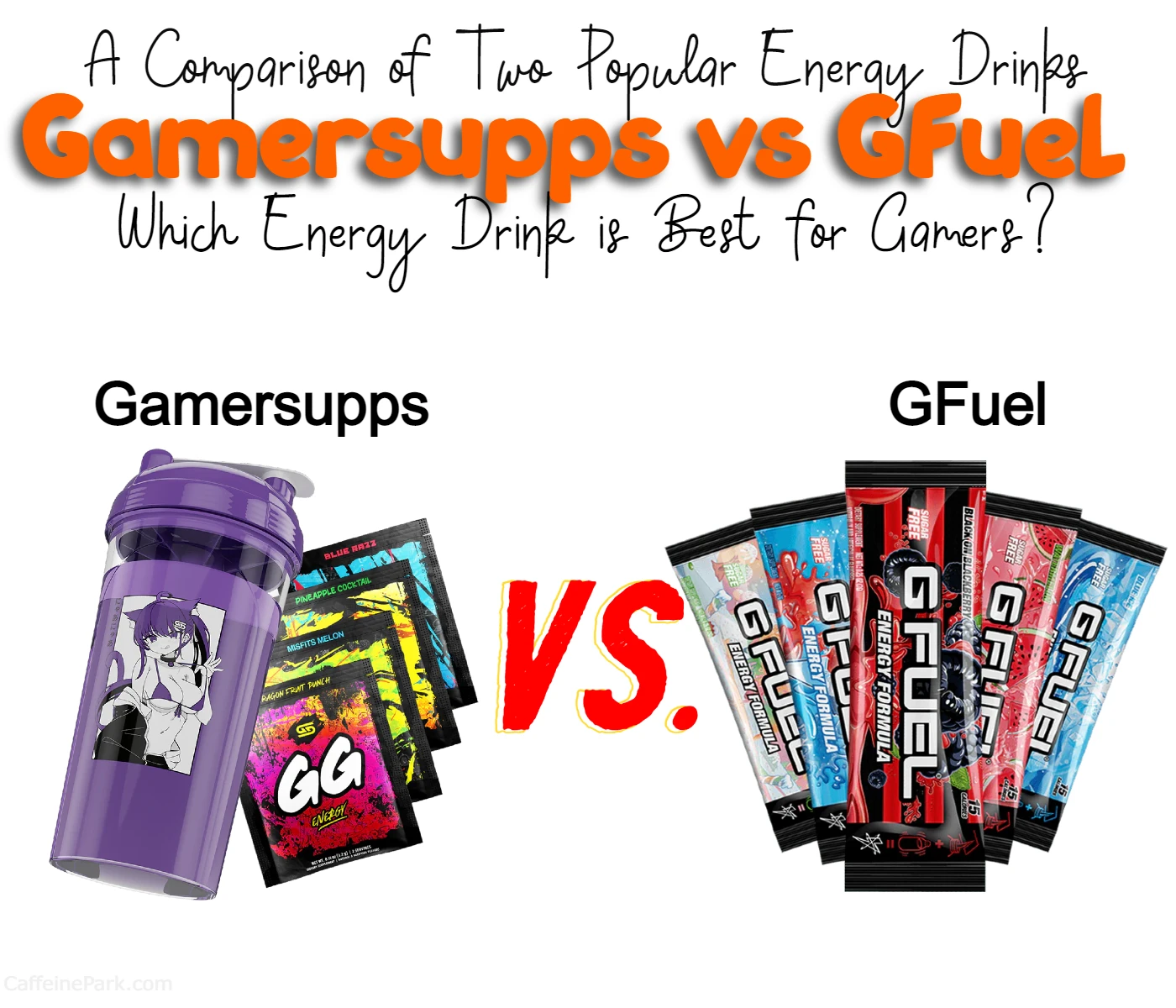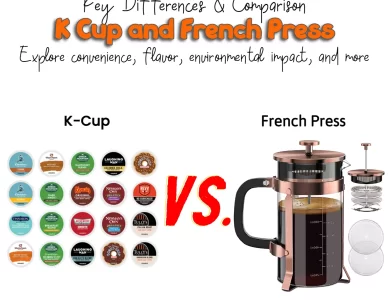
Are you looking for an energy drink to give you a quick boost of energy throughout the day? Two popular choices on the market are Celsius and Red Bull, but which one is the right choice for you? In this blog post, we’ll explore the differences between these two drinks so you can make an informed decision.
When it comes to ingredients, Celsius stands out for its natural ingredients such as green tea extract, ginger root, and guarana seed extract. It’s also low in calories and contains no sugar, making it a healthier alternative to many other energy drinks on the market. On the other hand, Red Bull contains synthetic caffeine and taurine, as well as sugar and other ingredients. While it may give you a quick burst of energy, it’s not necessarily the healthiest option.
Another important factor to consider is the target audience for each drink. Celsius is marketed toward health-conscious individuals who are looking for a natural, low-calorie energy drink. On the other hand, Red Bull has a wider target audience, including extreme sports enthusiasts and students who need a quick pick-me-up. With these differences in mind, it’s important to consider your personal needs and preferences when deciding which drink to choose.
So which one is right for you – Celsius or Red Bull? Read on to learn more about the differences between these two popular energy drinks and make an informed decision. here’s a quick chart outlining some of the key differences between Celsius and Red Bull:
| Celsius | Red Bull | |
|---|---|---|
| Taste | Wide range of flavors | Distinctive and tangy |
| Ingredients | Natural ingredients | Caffeine, taurine, sugar |
| Sugar | Zero-sugar options available | Contains sugar |
| Caffeine | Around 200mg per serving | Around 80mg per can |
| Target | Fitness-oriented | Broad target audience |
| Packaging | Vibrant colors and graphics | Sleek blue and silver design |
| Availability | Growing distribution | Widely available globally |
| Pricing | Competitive | Often positioned as premium |
| Additional | Heat line, On-The-Go packets | Sugar-free and flavored options |
| Reputation | Health-conscious, fitness focus | Global brand, cultural impact |
Of course, there may be other factors that come into play when deciding between these two drinks, but this chart should give you a good idea of some of the main differences. Ultimately, the choice between Celsius and Red Bull will depend on your personal preferences and needs.
Differences between Celsius and Red Bull
Let’s dive into the details and explore the differences between Celsius and Red Bull!
Celsius vs Red Bull: History and Branding
Celsius was first introduced in 2004 as a fitness and weight loss supplement. The brand has since expanded its product line to include a variety of energy drinks, supplements, and workout gear. Celsius is marketed as a healthier alternative to traditional energy drinks, with natural ingredients and no added sugar.
Red Bull, on the other hand, has been around since 1987 and is one of the most well-known energy drink brands in the world. Red Bull is marketed as a drink that can give you wings and is often associated with extreme sports and high-energy activities.
Celsius vs Red Bull: Ingredients
One of the biggest differences between Celsius and Red Bull is their ingredients. Celsius contains a blend of natural ingredients, including green tea extract, ginger root, and guarana seed extract. These ingredients are believed to boost metabolism, burn calories, and provide a natural source of energy.
Red Bull, on the other hand, contains caffeine, taurine, and B vitamins. While caffeine is a common ingredient in many energy drinks, taurine is unique to Red Bull and is believed to improve athletic performance and reduce fatigue.
Celsius vs Red Bull: Caffeine Content
Caffeine content is another important factor to consider when comparing Celsius and Red Bull. Celsius contains around 200mg of caffeine per serving, while Red Bull contains around 80mg of caffeine per serving.
This means that Celsius may provide a stronger boost of energy than Red Bull, but it also means that Celsius may not be as suitable for people who are sensitive to caffeine.
Flavors
Celsius offers a variety of flavors, including grapefruit, orange, and watermelon. Red Bull also offers a variety of flavors, including original, sugar-free, and tropical.
When it comes to flavors, the choice between Celsius and Red Bull is largely a matter of personal preference. Some people may prefer the fruity flavors of Celsius, while others may prefer the classic taste of Red Bull.
Ingredients
Celsius takes pride in its carefully selected ingredients, which are designed to enhance performance and provide a metabolic boost. Their drinks typically contain a combination of caffeine, green tea extract, ginger root extract, guarana seed extract, and various vitamins and minerals. The use of natural ingredients is a key selling point for Celsius.
Red Bull: Red Bull’s ingredients are geared towards providing an energy boost. It contains caffeine, taurine, B vitamins, sugar, and artificial flavors. The inclusion of taurine is a notable difference between Red Bull and Celsius, as taurine is an amino acid believed to have potential health benefits.
Sugar Content
Celsius: Celsius takes a low-sugar approach to their drinks. They offer a range of zero-sugar options that are sweetened with sucralose, an artificial sweetener. This makes Celsius an attractive choice for those who want to limit their sugar intake while still enjoying a refreshing beverage.
Red Bull: In contrast, Red Bull contains sugar in its original formula. While they do offer sugar-free variants, the classic Red Bull contains a moderate amount of sugar. This is an important consideration for individuals who are conscious of their sugar consumption.
Availability and Distribution
Celsius has gained popularity in recent years and can now be found in many retail locations, including grocery stores, convenience stores, and fitness centers. They also have an online store where customers can purchase their drinks directly. Celsius has been expanding its distribution network to reach a wider audience.
Red Bull is one of the most widely available energy drinks worldwide. It is sold in numerous countries and can be found in a wide range of locations, including grocery stores, gas stations, convenience stores, and bars. Red Bull’s extensive distribution network ensures that it is easily accessible to consumers in various regions.
Pricing
The pricing of Celsius drinks can vary depending on the location and the specific retailer. Generally, Celsius drinks are priced slightly higher compared to traditional carbonated soft drinks but are competitive within the energy drink market. The cost may also vary depending on the size of the can and any promotional offers available.
Red Bull is often positioned as a premium energy drink, and its pricing reflects that. It is typically more expensive compared to other energy drinks on the market. However, the price may vary depending on the region, retailer, and any promotions or bulk discounts available.
Additional Features and Product Lines
In addition to their core energy drinks, Celsius has expanded their product line to include other functional beverages. They offer Celsius Heat, which is a line of carbonated pre-workout drinks, and Celsius On-The-Go Powder Packets, which are convenient single-serving powder packets that can be mixed with water for a quick energy boost.
Red Bull has also expanded its product line beyond the classic energy drink. They have introduced variations such as Red Bull Sugarfree, Red Bull Zero, and Red Bull Editions, which offer different flavors and variations to cater to diverse consumer preferences. Red Bull has also partnered with other brands to create limited-edition flavors and collaborate on marketing initiatives.
Reputation and Cultural Impact
Celsius: Celsius has gained a positive reputation among health-conscious individuals and fitness communities. Its emphasis on natural ingredients, low sugar content, and metabolism-boosting properties has resonated with those seeking a healthier energy drink option. Celsius has also been involved in sponsorships and partnerships with athletes and fitness influencers, further enhancing its image in the fitness world.
Red Bull: Red Bull has established itself as a global brand with a significant cultural impact. It is often associated with extreme sports, music events, and adrenaline-fueled activities. Red Bull’s marketing campaigns, sponsorships, and involvement in high-profile events have contributed to its recognition and popularity among a wide range of consumers.
Target Audience and Marketing
Celsius positions itself as a fitness-oriented energy drink. Its branding and marketing primarily target health-conscious individuals, fitness enthusiasts, and those seeking an energy boost to support an active lifestyle. Celsius emphasizes the metabolic benefits of their drinks and positions them as a healthier alternative to traditional energy drinks.
Red Bull has established itself as a popular and well-known energy drink brand. It has a broader target audience, including students, professionals, and individuals looking for a quick energy boost. Red Bull’s marketing often focuses on extreme sports, adventure, and promoting an active and energetic lifestyle.
Packaging and Size Options
Celsius offers its drinks in various sizes, including 12-ounce cans and larger 16-ounce cans. The packaging features vibrant colors, energetic graphics, and prominently displays the flavor of the drink. The cans are designed to be eye-catching and convey a sense of energy and vitality.
Red Bull is commonly sold in 8.4 fluid ounce (250ml) cans, which are easily recognizable by their sleek blue and silver design. They also offer larger sizes, such as 12-ounce cans and 16-ounce cans. The smaller can size makes it convenient for on-the-go consumption and fitting into bags or cup holders.
Another Deference
One key difference between Celsius and Red Bull is their target audience. While both drinks are marketed toward people who are looking for an energy boost, their target demographics are slightly different.
Celsius is marketed toward health-conscious individuals who are looking for a natural, low-calorie energy drink. The brand’s focus on natural ingredients and weight loss supplements appeals to people who are interested in fitness and maintaining a healthy lifestyle.
Red Bull, on the other hand, is marketed towards a wider audience, including extreme sports enthusiasts, students, and anyone who needs a quick pick-me-up. The brand’s association with extreme sports and high-energy activities appeals to people who are looking for a drink that can help them push past their limits.
Another difference between Celsius and Red Bull is their availability. While both drinks are widely available in many countries, Celsius may be more difficult to find in some areas.
Red Bull, on the other hand, is available in most convenience stores, gas stations, and supermarkets around the world. This makes it a convenient choice for people who need an energy boost on the go.
Finally, it’s worth noting that Celsius and Red Bull have slightly different marketing strategies. Celsius often relies on influencer partnerships and social media marketing to promote its brand, while Red Bull has a long history of sponsoring extreme sports events and athletes.
Which One is Right for You?
Choosing the right energy drink for you can depend on a variety of factors, including your personal preferences, lifestyle, and health considerations. When deciding between Celsius and Red Bull, it’s important to consider the specific benefits and risks of each product, as well as your own individual needs.
For those looking for a lower-calorie energy drink option, Celsius may be the better choice, as it contains no sugar and just 10 calories per serving. It also contains a blend of vitamins and minerals, as well as natural caffeine from green tea, to provide a more sustained energy boost. On the other hand, Red Bull contains more calories and sugar per serving but may provide a more immediate and intense energy boost thanks to its higher caffeine content.
It’s also important to consider any health concerns you may have before choosing an energy drink. While both Celsius and Red Bull are generally considered safe when consumed in moderation, they may not be appropriate for everyone. It’s always a good idea to consult with a healthcare provider before incorporating any new dietary supplements or beverages into your routine.
Conclusion
In conclusion, while Celsius and Red Bull are both energy drinks that can provide a quick boost of energy, there are several differences between the two. Celsius is marketed towards health-conscious individuals and may be harder to find in some areas, while Red Bull has a wider target audience and is widely available around the world. Additionally, the two brands have different marketing strategies, which may appeal to different types of consumers.
FAQs
Celsius is made with natural ingredients like green tea extract, ginger root, and guarana seed extract, and contains no sugar. Red Bull, on the other hand, is made with synthetic caffeine and taurine, as well as sugar and a variety of other ingredients.
While both Celsius and Red Bull are energy drinks, they differ in terms of ingredients. Celsius drinks typically contain a combination of caffeine, green tea extract, ginger root extract, guarana seed extract, and various vitamins and minerals. Red Bull, on the other hand, contains caffeine, taurine, B vitamins, sugar, and artificial flavors. Red Bull also offers sugar-free variants.
Both Celsius and Red Bull are marketed toward athletes and active individuals. However, it’s important to note that individual preferences and tolerances may vary. Some athletes may find the energy-boosting effects of these drinks helpful, while others may prefer alternative options or natural sources of energy.
While Celsius positions itself as a healthier energy drink option, it’s important to remember that energy drinks, in general, are not considered to be the healthiest beverage choice due to their high caffeine and sugar content. While Celsius uses natural ingredients and claims to have no sugar, it still contains caffeine and other stimulants. Red Bull, on the other hand, contains both caffeine and sugar. It’s always advisable to consume these drinks in moderation and consider healthier alternatives such as water, herbal tea, or natural fruit juices.
Both Celsius and Red Bull contain caffeine, which can lead to side effects such as increased heart rate, jitters, anxiety, and difficulty sleeping if consumed in excessive amounts. It’s important to be mindful of your caffeine intake and consider any underlying health conditions or sensitivities you may have. If you have concerns, it’s best to consult with a healthcare professional.
Celsius promotes itself as a drink that can help boost metabolism and support weight loss efforts. However, it’s important to note that weight loss is a complex process that requires a combination of a healthy diet, regular exercise, and overall lifestyle changes. While energy drinks may provide a temporary boost, they should not be relied upon as a primary tool for weight loss.
Both Celsius and Red Bull contain caffeine, and it is generally recommended that caffeine consumption be limited for children and adolescents. The specific age restrictions may vary depending on the country, but it is generally advisable to avoid energy drinks or limit their consumption in young individuals. It’s always best to consult with a healthcare professional, especially when it comes to children and caffeine consumption.
Read More:
Source:





